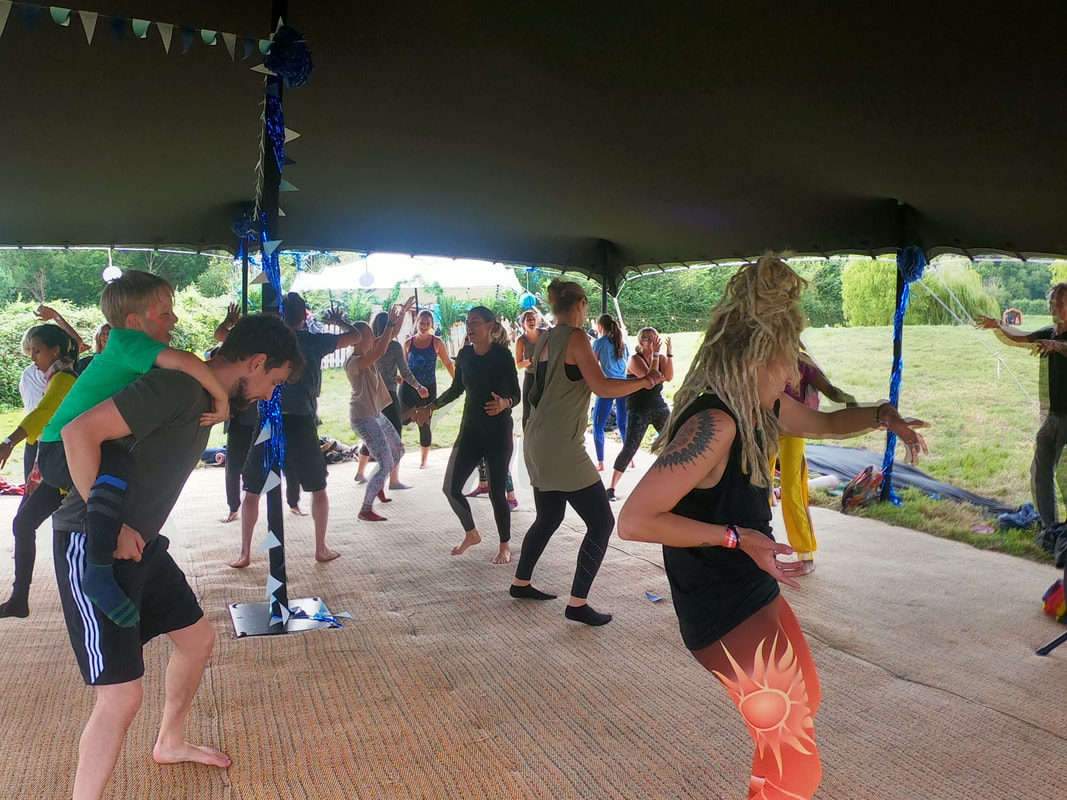|
With so many people feeling drawn to practice and teach in a fashion that is more intuitive, somatic and less mechanical than what we perceive as 'traditional asana' it is important to explore how this might come about. I'd say that we are by now pretty experienced in working with a foot in both camps. We have students on Teacher training who are thrown by the more self guided practices and others who feel averse to the more linear mat based asana. However they really do complement each other and there is no need to discard one or the other. As I d every year, Im currently updating and rewriting sections of the Yoga Like Water TT manual. I thought Id post the introductory passages on this balancing act in case any one wants to chew it over. AS ever Im not suggesting Im correct, its just an opinion.
Finding Freedom in Movement: We have already discussed that most people will benefit greatly by spending some extended time exploring their bodies from the relative safety and well defined structure of ‘formal asana’ that is to say, postures that they associate with yoga - standing balances, warriors and so on. The relative lack of movement and the connection to breath that these offer is a great opportunity for drawing practitioners focus and attention into the body. Once within this quiet space they can, with the help of intelligent questioning from the guide, start to listen and then understand a little about what their body is telling them - a voice that they have probably long disconnected from. This re acquainting themselves with the body, its patterns and oddities, its traumas and imbalances is a step that cannot be skipped over. It doesn't have to be done within the framework of asana, indeed any unhurried, introverted practice will work equally well, such as Qi Gong or Tai chi. But it simply cannot be done in a hurry, a vinyasa flow will not do. Many of us will of course want to work in a more intuitive and organic ways too, outside of what can feel like a very rigid, mechanical and linear asana format. That may be one fo the reasons why you are here. The problem comes if we introduce these somatic type practices too suddenly without any structure or background in listening at all. The students are likely to become confused as to the purpose, unable to ‘feel’ their bodies at this stage, disconnected from the practice and will become quite likely disheartened by the fact that they don’t know what they are supposed to ‘do’. Even long term students of yoga asana can become so comfortable in the relative safety of the postures they are familiar with, that they will be reluctant to step outside of them and start moving in a completely free and intuitive way. By using a mixture of gradually introduced games, partnerwork and solo practices we can start to get people trusting themselves in a gentle and natural way. They will end up moving much more naturally and freely without even realising it when you introduce a ‘game’ scenario where they are all laughing and relaxed. Take away the emphasis of any gain or progression in such practices, just allow the play to happen and unfold naturally. Comments are closed.
|
AuthorDan Peppiatt. Archives
June 2024
Categories |

 RSS Feed
RSS Feed